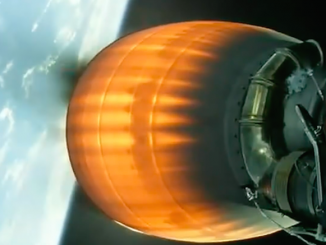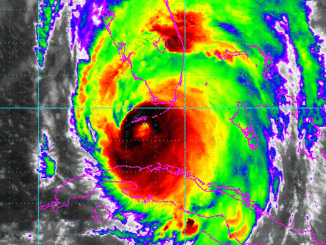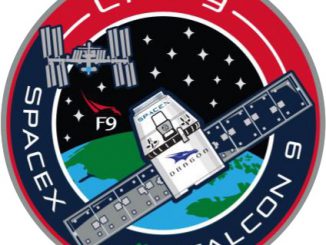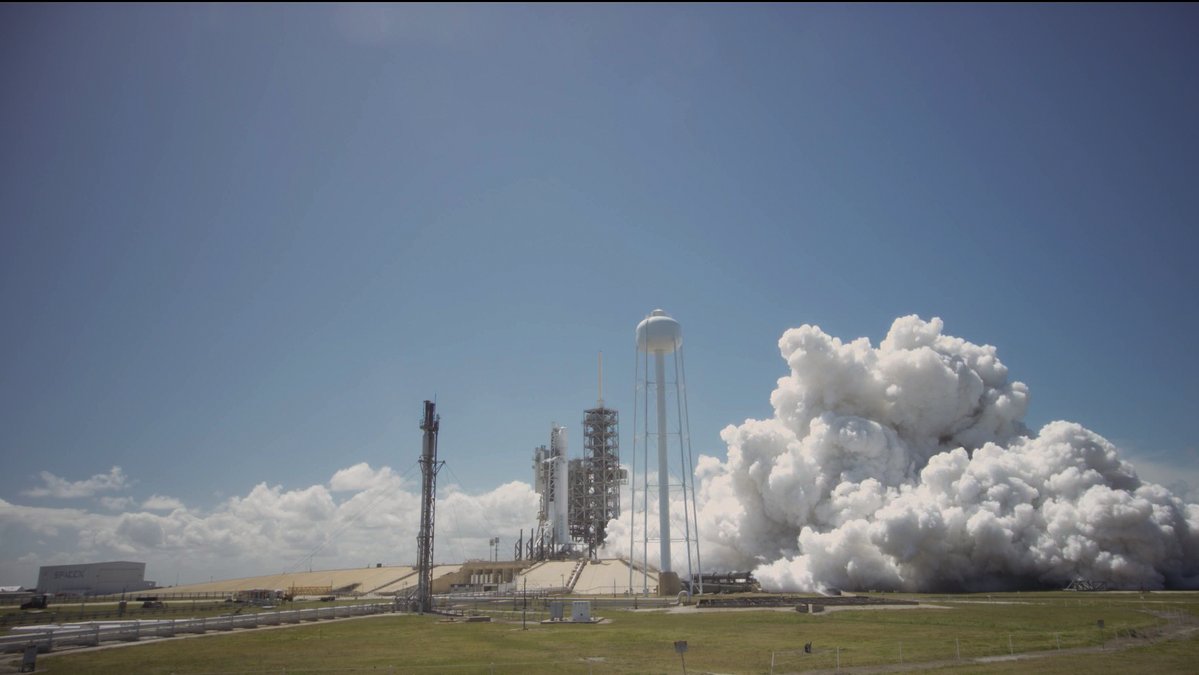
SpaceX has set the first launch of a “flight-proven” Falcon 9 rocket for Thursday evening after running the booster through a hold-down engine firing Monday at NASA’s Kennedy Space Center in Florida.
Nearly ready for its second trip into space, the Falcon 9’s first stage booster ignited at launch pad 39A at 2 p.m. EDT (1800 GMT) and throttled up to full power — roughly 1.7 million pounds of thrust — for a few seconds as clamps held the rocket on the ground.
The brief ignition of the rocket’s nine Merlin 1D main engines occurred after SpaceX’s launch team, overseeing a computer-controlled sequencer, prepped the launcher by filling with its supplies of super-chilled, densified RP-1 kerosene and liquid oxygen propellants.
SpaceX tweeted that the static fire test was completed successfully. Engineers will review data from the launch rehearsal before convening a launch readiness review later this week to formally clear the rocket for liftoff.
The launch window opens at 6 p.m. EDT (2200 GMT) Thursday and extends for two-and-a-half hours.
The static fire test was set for Sunday, followed by a launch attempt Wednesday, but preparations ran behind schedule over the weekend.
The launch is critical for SpaceX, which intends to re-fly its rockets many times in a cost-cutting measure meant to reduce launch prices and open more opportunities for space transportation and exploration.
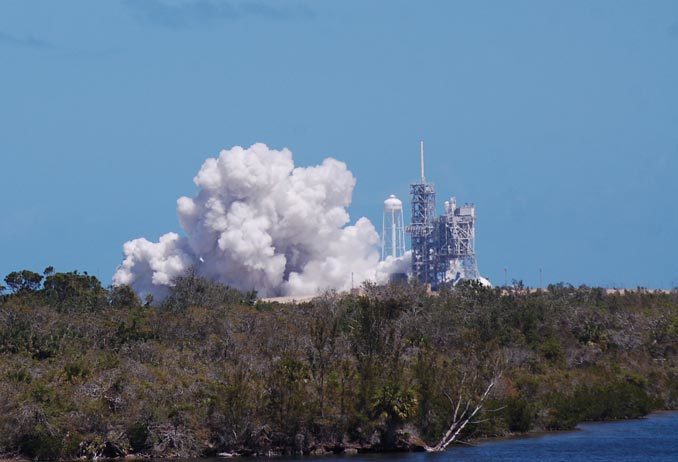
SpaceX founder and chief executive Elon Musk has a vision to send large transport ships to Mars with human passengers and cargo to eventually set up a self-sustaining civilization on the red planet. Those lofty ambitions require spaceflight to become less expensive, and reusability is a cornerstone to that objective.
While the company hopes to field future rockets that are rapidly reusable, SpaceX engineers spent around four months refurbishing the first stage booster set to launch this week. The core of the Falcon 9 first flew on April 8, 2016, with a Dragon supply ship on a cargo mission to the International Space Station, then landed with the assistance of rocket thrust on a mobile platform in the Atlantic Ocean.
The rocket was returned to Cape Canaveral, then trucked back to SpaceX’s headquarters in Hawthorne, California, for thorough inspections and refurbishment. The booster then traveled to SpaceX’s test site in McGregor, Texas, for hold-down firings and returned to the Florida launch a few weeks ago.
The rocket’s second stage, powered by a single Merlin 1D engine with a nozzle extension, and payload fairing were manufactured new for this week’s flight. SpaceX is working on retrieving and reusing the Falcon 9 fairing, which comes in two clamshell-like halves, while the second stage will remain single-use for the foreseeable future.
With the static fire completed Monday, ground crews will roll back the two-stage Falcon 9 rocket to its hangar at the southern perimeter of pad 39A, where the SES 10 communications satellite awaits attachment to the launcher.
The SES 10 spacecraft, tipping the scales at around 11,700 pounds (5,300 kilograms), is already encapsulated inside the Falcon 9’s nose fairing after being prepared for liftoff in a separate payload processing facility a few miles to the south of pad 39A.
SES, a Luxembourg-based international telecom satellite operator, announced its agreement with SpaceX in August 2016 to send the SES 10 satellite to orbit on a Falcon 9 rocket with a reused first stage.
While SpaceX and SES did not disclose terms of their contract for the SES 10 launch, SpaceX president and chief operating officer Gwynne Shotwell said last year the launch provider was offering a 10 percent discount for customers willing to fly their payloads on reused boosters.
That discount should become steeper on future flights, according to SpaceX officials. The company lists a regular commercial Falcon 9 flight at $62 million.
SES is designed to broadcast video and television services across Latin America. It was built by Airbus Defense and Space and assembled in Toulouse, France.
Shotwell said earlier this month that the company intends to fly up to six reused boosters this year. The maiden launch of SpaceX’s Falcon Heavy rocket, driven by three Falcon 9 rocket cores strapped together, is expected to utilize one or two previously-flown boosters, but SpaceX has not publicly identified other missions that will reuse rocket stages.
The weather outlook for Thursday evening’s launch window calls for a 70 percent chance of acceptable conditions.
The U.S. Air Force’s 45th Weather Squadron will watch for violations of the cumulus cloud and thick cloud layer rules during the countdown.
“On Wednesday, a weak surface boundary will drape across the Mid-Atlantic states and trail back into a developing storm system over Texas,” the Air Force weather team wrote in a forecast issued Monday. “On Thursday, the strengthening Texas storm system begins to track northeasterly into the Tennessee Valley. Although the system and its associated frontal boundary will not directly impact the spaceport until late Friday and Saturday, upper-level cloudiness and added instability ahead of the system is possible.”
The outlook calls for scattered clouds at 3,000 feet and broken clouds at 28,000 feet, southeast winds at 10 to 15 mph, and a launch time temperature of 80 degrees Fahrenheit.
If the launch is delayed to the backup day Friday, the weather is forecast to worsen with a 60 percent chance of favorable conditions.
SpaceX’s landing platform is on the way to the landing zone a few hundred miles east of Cape Canaveral to receive the Falcon 9 first stage, which will again attempt a landing at sea after completing its two-and-a-half minute firing to push SES 10 toward space.
A new robot is expected to debut after the booster touches down to remotely safe and secure the rocket on the deck of the barge, or drone ship, for the trip back to Port Canaveral.
Email the author.
Follow Stephen Clark on Twitter: @StephenClark1.

